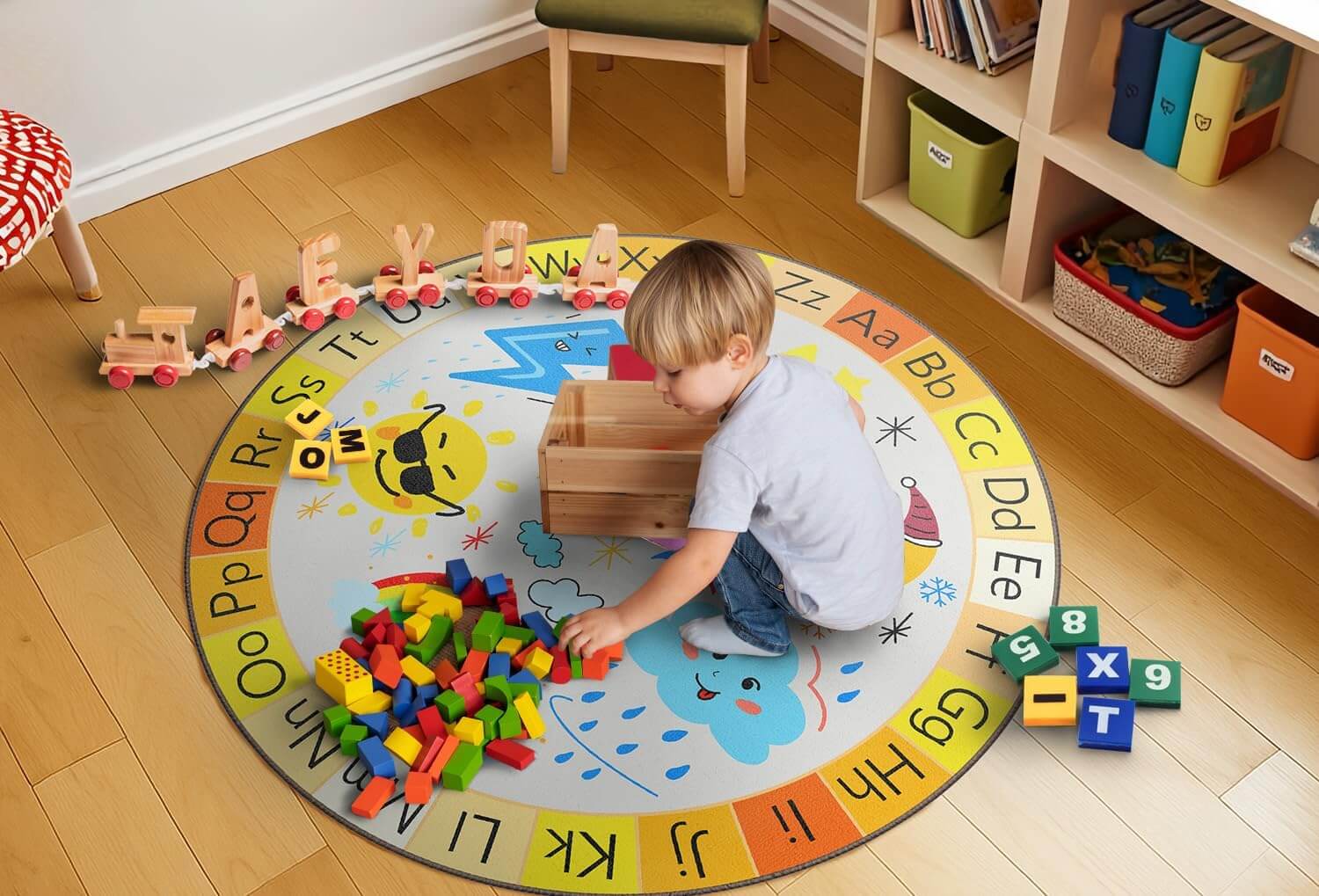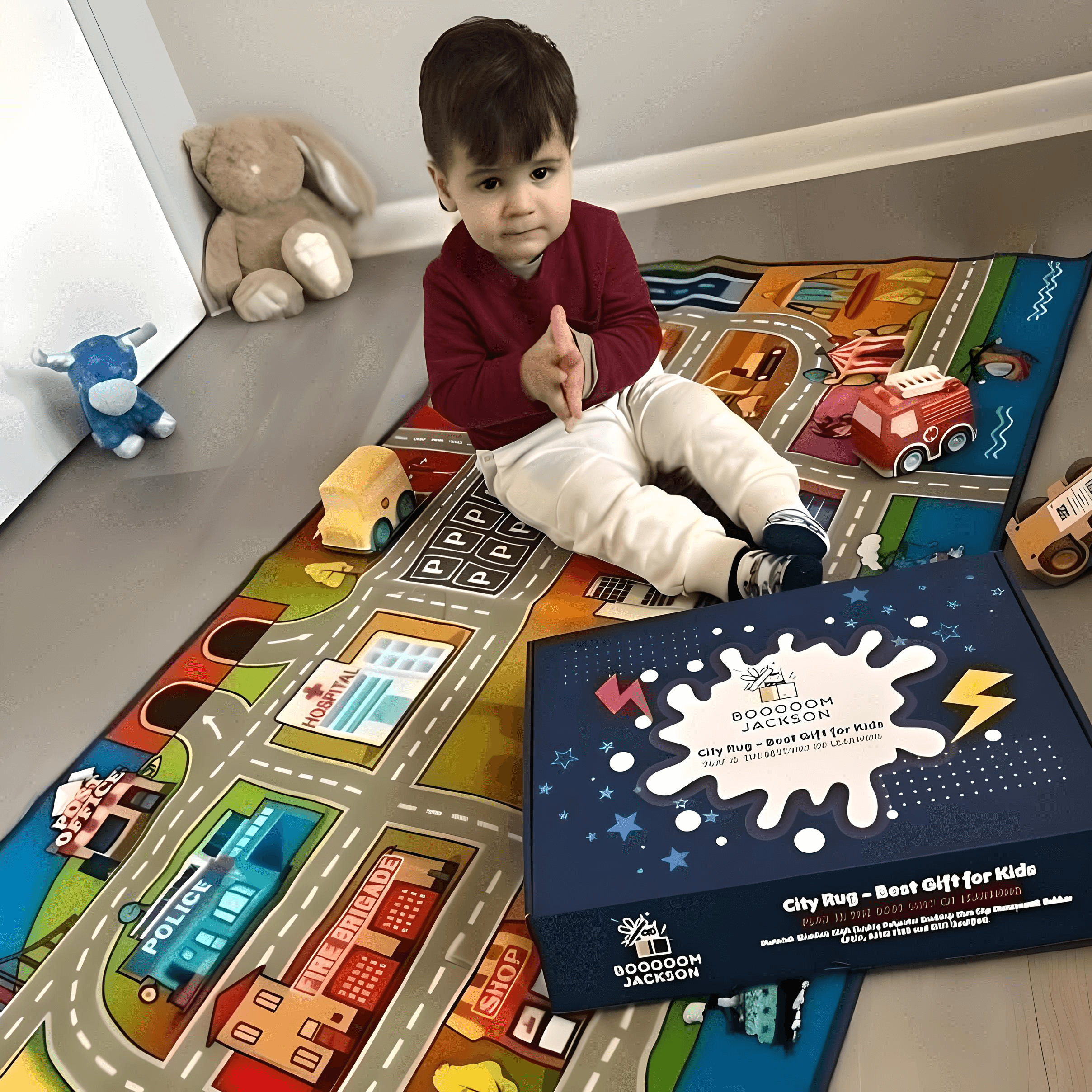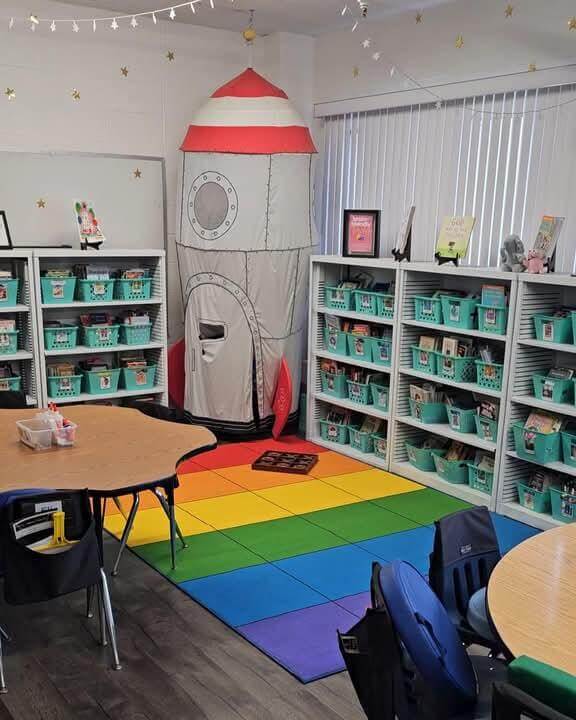When creating effective learning environments, the flooring beneath our feet plays a crucial but often overlooked role.
Whether you're a parent designing a home learning space or an administrator outfitting an entire school, selecting the right classroom rugs requires careful consideration of different factors.
This guide explores the key differences between home and school carpet needs to help you make an informed decision that balances functionality, durability, and comfort.
Durability Requirements: Traffic Patterns and Wear Expectations
School Carpeting
School carpets must withstand extraordinary wear and tear. With hundreds of students traversing the same paths daily, large classroom rugs must face challenges that few other environments encounter, covering expansive high-traffic zones.
Schools typically require:
- Commercial-grade carpeting with wear ratings of 4.0 or higher
- High-density fiber construction
- Solution-dyed fibers that resist fading and staining
- Modular carpet tiles that allow for selective replacement
According to Facilities Management experts, school carpets should be designed to last 7-10 years under heavy use conditions before replacement becomes necessary.
Home Learning Spaces
While home learning areas experience significantly less foot traffic, they still benefit from durability considerations:
- Medium-grade residential carpeting (wear rating 3.0-3.5)
- Stain-resistant treatments for occasional spills
- Residential carpet padding for increased comfort and longevity
Home carpets in learning spaces typically last 10-15 years with proper care, despite having lower initial durability ratings than commercial options.
Safety Considerations: Standards and Requirements
School Carpeting
School environments must adhere to strict safety codes and standards:
- Class I fire ratings (per ASTM E648 standards)
- Low VOC emissions (meeting CRI Green Label Plus certification)
- ADA compliance for accessibility
- Anti-microbial treatments to reduce germ spread
These requirements aren't just best practices—they're often legally mandated for educational institutions.
Educational facility guidelines emphasize the importance of these safety standards in protecting student health.
Home Learning Spaces
Home environments have fewer regulatory requirements but should still consider:
- Residential fire ratings
- Hypoallergenic options for sensitive family members
- VOC emissions (particularly important for enclosed spaces)
- Cushioning for comfort during floor activities
While not subject to the same strict regulations as schools, home learning spaces benefit from adopting some institutional safety practices, particularly regarding indoor air quality and fire safety.
Design Elements: Functional vs. Aesthetic Priorities
School Carpeting
School carpet design prioritizes function over form:
- Patterned carpets to hide soil and stains
- Educational elements (alphabet, number grids, maps)
- Zoning with colorful classroom rugs to clearly delineate activity areas and energize the learning environment
- Wayfinding elements integrated into flooring design
These design elements serve specific educational purposes. According to educational design researchers, thoughtfully designed classroom seating rugs can reduce management issues by clearly defining individual spots for structured activities.
Home Learning Spaces
Home learning environments typically balance function with home décor, often utilizing a soft reading rug to provide comfortable textures for extended sitting during story time.:
- Coordination with overall home design
- Comfortable textures for extended sitting
- Multi-purpose designs that work for both learning and family activities
- Smaller educational elements that don't overwhelm the space
Home learning spaces benefit from carpets that enhance focus, such as our pastel classroom rugs, which offer a calming aesthetic that complements home décor., creating environments that transition smoothly between educational and family use.
Maintenance Needs: Cleaning Protocols and Expectations
School Carpeting
School maintenance follows rigorous schedules:
- Daily vacuuming of high-traffic areas
- Weekly deep cleaning of classroom carpets
- Quarterly professional extraction cleaning
- Annual sanitization treatments
These intensive maintenance protocols require specialized equipment and trained staff. Schools often select carpets specifically engineered to withstand these frequent cleaning cycles without deteriorating.
Home Learning Spaces
Home maintenance tends to be more flexible but still important:
- Regular vacuuming (2-3 times weekly)
- Spot cleaning as needed
- Professional cleaning every 12-18 months
- DIY deep cleaning between professional services
Home learning spaces benefit from carpets that are easy to maintain with residential equipment, allowing parents to maintain healthy learning environments without industrial cleaning resources.
Budget Factors: Initial Investment vs. Lifetime Value
School Carpeting
School carpet investments are typically calculated based on:
- Initial cost amortized over expected lifetime
- Replacement/repair budget allocations
- Maintenance costs (labor and supplies)
- Energy savings (insulation value)
While schools often pay premium prices for commercial-grade carpeting, the investment typically results in lower lifetime costs through reduced replacement frequency and maintenance efficiency.
Home Learning Spaces
Home budget considerations usually include:
- Initial purchase cost
- Professional installation expenses
- Cleaning supply needs
- Potential replacement timeline
Homeowners creating learning spaces can often achieve good value with mid-grade carpeting that balances quality with reasonable cost, especially when focusing on smaller dedicated areas rather than whole-house carpeting.
Environmental Impact: Sustainability Considerations
School Carpeting
Educational institutions increasingly prioritize:
- Recycled content carpeting
- Recyclable carpet programs
- Low VOC adhesives and backing
- Environmental certifications (Cradle to Cradle, LEED contributions)
Many school districts now have sustainability mandates that directly influence carpet selection. According to green building standards, flooring choices can significantly impact a building's overall environmental performance.
Home Learning Spaces
Home environmental considerations typically include:
- Natural fiber options (wool, cotton blends)
- Non-toxic treatments and backings
- Indoor air quality impact
- Local recycling options for replacement
Families creating learning spaces increasingly select carpets with environmental benefits, particularly when children will spend significant time in close contact with the flooring.
Installation Differences: Methods and Timelines
School Carpeting
School installation projects involve:
- Large-scale professional installation teams
- Tight scheduling (often during breaks or summer months)
- Modular approaches for minimal disruption
- Special attention to transitions between flooring types
Commercial carpet installation in schools requires specialized expertise to ensure proper substrate preparation, seam management, and adherence to safety codes.
Home Learning Spaces
Home installation typically features:
- Smaller scale professional installation or DIY options
- Flexible timing based on family needs
- Standard residential installation methods
- Integration with existing home flooring
Home learning space carpet installation tends to be less disruptive and complex than school projects, though professional installation still offers advantages in durability and warranty protection.
Conclusion
Whether selecting carpeting for a home learning area or a school classroom, understanding the specific needs of each environment leads to better decisions and more successful outcomes.
School environments demand commercial-grade durability, strict safety compliance, and educational functionality.
Home learning spaces benefit from balancing comfort with durability, aesthetics with function, and quality with budget considerations.
By recognizing these key differences, parents can create effective home learning environments without unnecessarily investing in commercial-grade materials, while school administrators can ensure they're selecting carpets specifically engineered for institutional demands.
The right carpet selection creates learning spaces that support education while meeting the practical needs of each unique environment.




Leave a comment
This site is protected by hCaptcha and the hCaptcha Privacy Policy and Terms of Service apply.